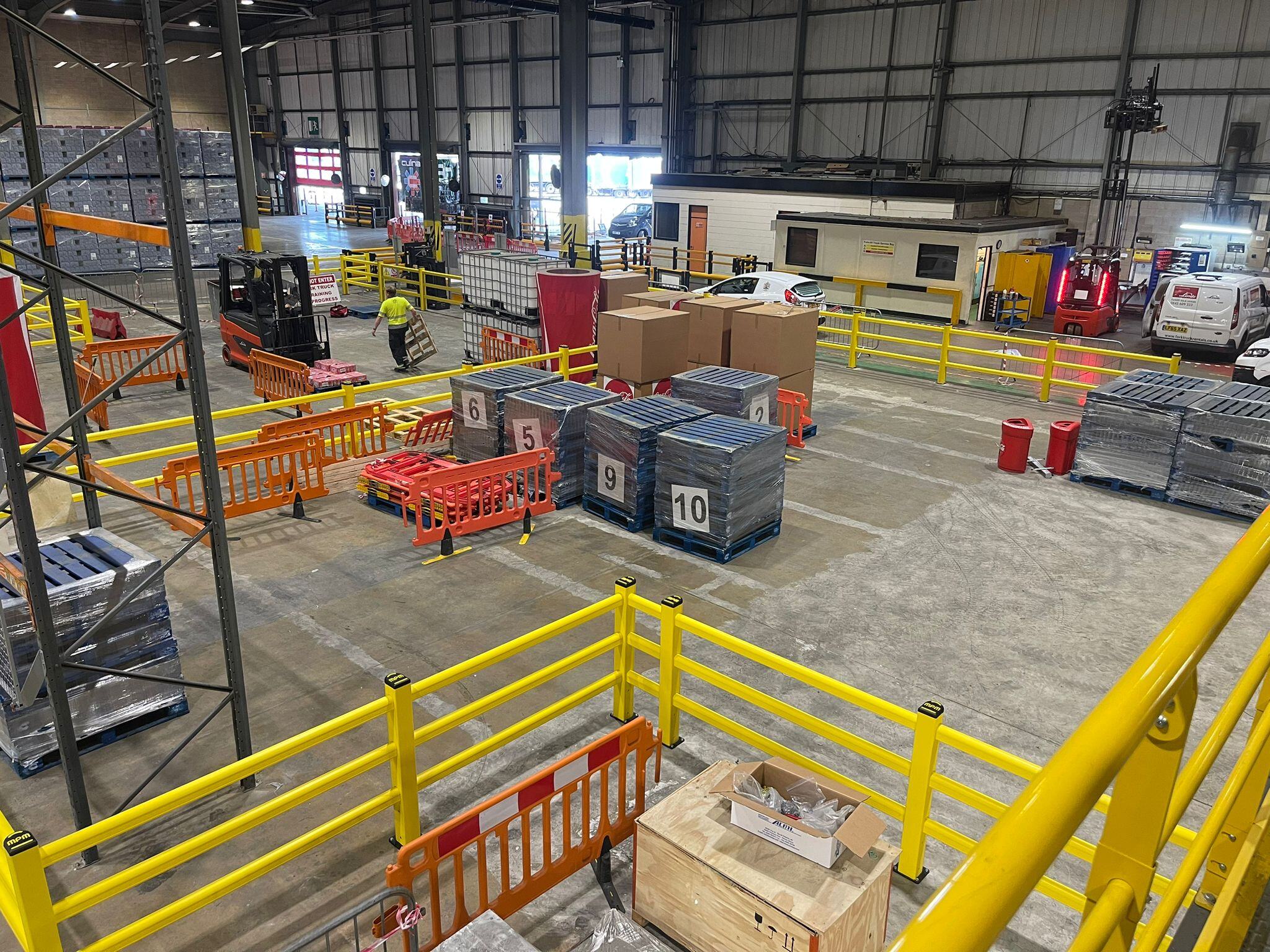What is the best way to protect conveyors from being hit by a forklift truck?
 By
Caleb Shaw
·
2 minute read
By
Caleb Shaw
·
2 minute read
If you’ve had to get your conveyors repaired from being damaged by a forklift truck, then you’ll know how easy it is for a small impact to cause a lot of damage. The purpose this article is to give you some options of how to protect your conveyors from any material handling equipment.
Most manufacturing facilities across the UK have some form of conveyors in their production process, in order to automate and quicken processes. These can be powered by electricity or just use a simple roller system. Because of the nature of what a conveyor is, they very often work hand-in-hand with material handling equipment to process goods and materials. Due to the close proximity of forklift trucks, MHE and other machines, it is necessary to protect the assets as much as possible. The big challenge for most companies, is that space is also a constraint. The good news is that there are some very viable options to help you.
Contents:
Steel barriers
Many factories use a steel barrier system commonly called Armco. These barriers are the cheapest option initially; however, the cheapest option isn’t always the best option. Steel barriers as can be seen on motorways to divide between carriageways or an effective replaceable method of stopping vehicles. The downside to using steel barriers is that when they do get hit, they get damaged irreversibly causing damage to the barrier itself, the concrete floor it’s fixed to, and the forklift truck. Read more about Metal vs Polymer Barriers here.
Polymer barriers
The other option is to protect your conveyor with a polymer-based barrier commonly referred to as curb protections. A curb barrier is fixed to the floor and is designed in a way to absorb any impacts from FLT’s rather than transferring the stress directly to the bolt holding it down. Because it is made from polymer, the barrier will flex and give but will return to its original shape whereas a non-polymer barrier will deform permanently. Read more about the best polymer barriers in the UK here.
LED Laser Lines
One effective method to prevent collisions between forklifts and conveyors is the use of LED laser lines. These lines can be projected onto the floor to create highly visible boundaries around conveyor systems. Unlike traditional painted lines, which can wear away or become obscured by dust and debris, LED laser lines remain sharp and bright, ensuring they are easily noticed by forklift operators. By clearly delineating safe zones and areas of restricted access, these laser lines serve as a constant reminder for operators to stay within their designated pathways, reducing the risk of accidental impacts. Additionally, Lasers can be programmed with sensors, to provide audible warning sounds when the line is breached, providing a warning to FLT drivers to stop moving in that direction. Read more about Laser Lines for floor markings here.
Signage and a culture of Vigilance
Beyond physical barriers and technological solutions, cultivating a culture of vigilance is crucial in maintaining a safe working environment. Clear, well-placed signage can guide forklift operators and other personnel, highlighting areas where extra caution is needed, such as near conveyors or intersections. However, signage alone is not enough; it must be part of a broader safety culture where employees are continuously reminded of the importance of following safety protocols.
Protecting conveyors from forklift truck damage is essential for maintaining the efficiency and safety of your operations. While no single solution is universally best, a combination of strategies offers the most comprehensive protection. Steel barriers provide a robust, though sometimes costly, physical defense, while polymer barriers offer flexibility and durability that can save money in the long run. LED laser lines enhance visibility, guiding forklift operators with clear, adaptable boundaries that help prevent accidents. Additionally, fostering a culture of vigilance through proper signage and ongoing safety training ensures that all employees remain alert and engaged in maintaining a safe work environment.
By integrating these methods, you can create a multi-layered approach to conveyor protection, reducing the risk of damage and ensuring the continued smooth operation of your facility.



